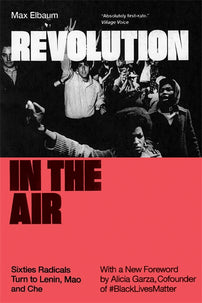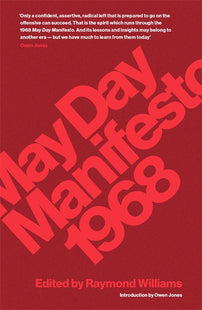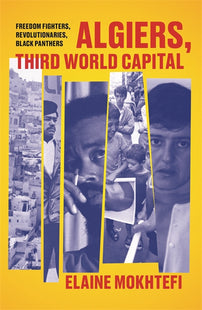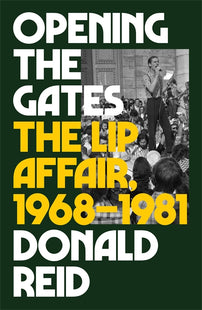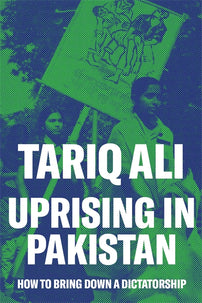Sweden and the Long 1968
Sweden's 1968 can be most clearly registered in the context of a wave of radicalization that stretched from the 1950s to the 1980s.

1968 was a year of intensified radicalization in Sweden, mainly among young people, students, and intellectuals. Students were occupying university buildings, while the Vietnam solidarity movement transformed into a mass movement and new social activities flourished. Intellectuals, writers, and artists all helped transform the spirit of time, with socialism at the core. Today, however, there is a tendency to reduce the radicalization of the 1960s to this alone. It is often assumed that at the end of the year the struggle was over, the students retired and continued their long march through the institutions. Nothing could be less true.
The Swedish 1968 was a wave of radicalization that stretched over several decades — from the close of the 1950s until the dawn of the 1980s — appropriately ending with the referendum on nuclear power. The "long 1968" can aptly be divided into three phases: First of all, the end of the 1950s up to the mid-1960s, marked the prelude in which the old social movements often served as early risers. Next, the period of 1965-1970 — with 1968 right in the middle — became the "red ‘60s," with the Vietnam movement, student revolts, and the emergence of new social movements. Finally, during the 1970s, the process intensified and a diversification started to take place, bringing with it the emergence of the women’s movement, the environmental movement, counterculture movements, political leftist groups, and most importantly, the radicalization of the working class.
Underlying this timeline is my understanding of the Swedish 1968 in its extended form to be characterised by the central role of the social movements and the interaction between old and new movements.
Early Risers
The first phase, as in many other countries, began with the paradigm shift that occurred around the transition from the 1950s into the 1960s. The chilling Cold War winds, which had sent many intellectuals searching for cover, subsided. Instead, hot southerly winds swept in. The colonial wars for independence put the Third World's situation on the international agenda, complementing the East/West dichotomy with the North/South. Furthermore, in Sweden there was growing solidarity with Algeria in addition to protests against apartheid and racism, and demonstrations against the atomic bomb.
Traditional popular movements played the role of early risers; the peace movement, political youth organisations, parts of the trade union movement, women’s organisations, and the churches were all involved in such campaigns. It could be said that movements from this period served as a form of greenhouse, where ideas about international collaboration and practical solidarity initiatives were cultivated and planted in a hotbed, before quickly spreading with the wind.
This first phase of 1960s radicalization in Sweden was partly a liberal issue. Settling matters with all forms of conservative traditions, the system of orders, and Puritanism were all relevant issues, and moral issues were particularly important. Along with the democrats and socialists of the early 1960s, young liberals came to serve as initiators and promoters across a number of then controversial issues: sexuality, gender divisions, prison care, aid to developing countries, and apartheid.
1965: The Tide Turns
Sociologist Göran Therborn has claimed that 1965 was more important to Sweden than 1968 for its political developments; indeed, it was in 1965 that the New Left was coined as a Swedish concept. The Zenit group was formed in Lund and published En ny vänster (A New Left) along with the works of Marx and the prison diaries of Gramsci. At the same time Unga Filosofer (Young Philosophers, an influential Marxist group) started their activities, Olaf Palme held his first famous Vietnam demonstration, and what would soon become the United FNL groups, DFFG, evolved, as did the embryo of the Maoist movement in Sweden. Social democracy was also affected. 1965 was also the year the new youth culture made an apparent breakthrough. Mod movements were initially more tangible elements than the Vietnam demonstrations. Regardless, the New Left was also coming into its own.
New Social Movements
Even if the old social movements played an important role as early risers for the radicalization of the 1960s, it is evident that the forms chosen by the left for their actions were new. What we can see during the second half of the 1960s — both in Sweden and internationally — is the explosive maturation of activist groups. The student movement was, in a narrow sense, only a smaller part of this phenomenon. The occupation of the Swedish student union building in May 1968, and subsequent 27 May movement in Stockholm, was a relatively ephemeral event, as was SDS in Lund and Gothenburg. One reason could be the fact that many of the demands raised in the struggle in continental Europe related to the democratisation of higher education were already on track to be realised in Sweden.
Instead, a striking number of social movements were focused on international solidarity efforts. The Vietnam movement, DFFG, assumed a unique position as the largest, most organised and influential, but it was far from the only one. A review of journals and bulletins from the close of the 1960s demonstrates solidarity with movements all over the third world: the Latin American Bulletin, the Palestine Bulletin, The Indonesian Bulletin, A Free Spain, The Greece Bulletin, and Black Power/Scan-SNCC. In addition, MPLA in Angola, Frelimo in Mozambique, and Biafra had separate bulletins and solidarity with South Africa was again mounting. Groups in support of developing countries surfaced across the nation. Alternative movements such as the Alternativ jul (Alternative Christmas) group, which targeted the consumer-oriented society, or the Christian-oriented Ny gemenskap (New Community), were an important element. Sociopolitical movements, concerning prison reform and treatment of people with substance abuse problems, that span to the present are also largely a result of the 1960s upswing.
From a wider perspective, the actions of the 1960s movements occupied public space in terms both of the media discourse — for example, dialogue conducted in the newspapers’ culture pages and academic debates — and physical space. Through demonstrations, posters, magazine sales, collections, leaflets, lobbying meetings, and teach-ins, the movements and their messages were made visible to one and all. The fact that there was a uniform feature to the forms of these organisations and actions supports the theory of a joint learning process undertaken during 1960s radicalization.
The 60s Become the 70s
To a certain extent, the final years of the 1960s mark the culmination of the period’s radicalization, while 1970 could be said to mark the start of a new stage. The period around 1968 was the peak of the spontaneous phase; a time when values changed most rapidly, and when a new perspective on the world broke through, not only among leftist activists but in radio, TV, and the newspapers. Movements evolved with new, sometimes spectacular, activist alternatives. The era politicized all aspects of reality; everything was politics, everything could be challenged and for many, everything was possible. Had the process stopped there, the consequences would still have been significant. An Important ideological and value-oriented transformation had been perceived, however few political and institutional changes had yet been carried out. The radical movement was still primarily a youth and student movement, with limited social and geographical grounds.
But the radicalization process did not cease: quite the opposite. The year 1970 marks a succinct borderline for a new phase, indeed, most of the events associated today with 1968 in Sweden in fact occurred during the 1970s. The most important of new social movements — the women’s movement, Group 8 — was introduced in 1970 and quickly became a big success, with many followers and a huge public impact. It had a clear socialist platform, yet the women were still able to build alliances with traditional women’s organisations around common issues.
The environmental movement started to grow strong with the emblematic Battle of the Elms in Stockholm, 1971. The struggle against the demolition of old cultural buildings in the city’s central areas swelled like avalanches, as did environmental action groups all over the country. Importantly, these groups attracted not just young people, but people of all ages including those with considerably less radical values than those involved in the 1968 movement, which made it increasingly acceptable to conduct political activities outside parliamentary structures. This building of broad unity culminated with the anti-nuclear movement, which included both left wing activists and the leading bourgeois party, the Centre Party.
However, the most important of events in the early 1970s was, without a doubt, the miners’ strike, and the wave of strikes that followed in its wake, including key women’s strikes. This had far-reaching consequences for the social democratic labour movement; while leading social democrats with certain superiority had viewed the student occupations as a peripheral operetta, the miner’s strike sent completely different signals. The Swedish working class found itself completely smitten by contemporary radicalism. This lead to a considerable outbreak of activities in order to retain the initiative, including comprehensive union laws with co-determination acts (culminating in the bill for employee wage funds) as well as more extensive social reforms.
Most of the social welfare network that is now connected to the mythical Swedish model is, in fact, a product of the 1970s. The extent of the achievements during this period is best gauged by the fact that the proportion of GDP that made up the public sector expenditure in the 1970s increased from 40 to more than 60 per cent. A striking number of reforms were related to family policy, and many had the stamp of equality: housing allowances for families with children and for pensioners, a six month gender neutral parental insurance, greatly increased child allowance, and a decision on state-subsidized universal daycare provision for all children. In addition, health insurance was radically reformed, far-reaching improvements were made to unemployment insurance, and a retirement age of 65 and a 40-hour working week were both introduced. While these reforms led to the rapid growth of an inclusive and universalistic welfare society, they were based on a deep-seated belief in the existence of a strong and potent state. A planned economy and an active governmental economic policy were seen as a necessary and corrective complement to free-market forces. The tendencies towards a decommodification of the welfare sector were significant. The thing that made this extensive wave of reforms special — besides its comprehesiveness — was its openly statist focus; all central components of the welfare system were financed, owned, and run by the state.
The depth of radicalization across Swedish society during the 1970s can be demonstrated by the trade unions in the Swedish Trade Union Confederation, LO, which adopted a program for wage-earner funds. Each year a set proportion of a company’s profits was to be transferred to funds controlled by the unions. LO traditionally constituted the reformist right wing of the labour movement, yet it now supported a system that, if realised, would have given employees control of most companies after between twenty and seventy-five years. This dramatic development is not possible to understand without highlighting the pressure that was generated by the deep radicalization in Swedish society, carried by new social movements and transmitted to the old. That so many of the social reforms were related to issues important for women — and that Sweden became the most emancipated country in the word for women — can only be explained by the pressure applied by the new women’s movement and its impact on both working women and traditional women’s organisations well beyond the feminist Group 8’s basic units.
This was a time when the demands for freedom, democracy, and equality raised by the 1968 generation became concrete politics though a radicalised labour movement.
Kjell Östberg is a professor of history at Södertörn University in Sweden.
[book-strip index="1" style="display"]